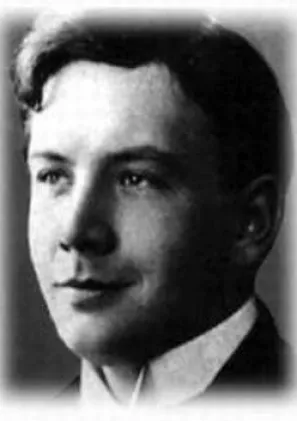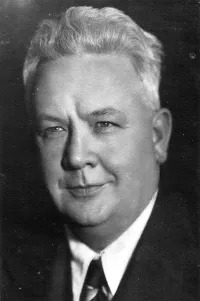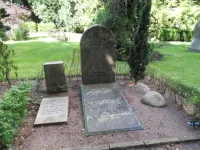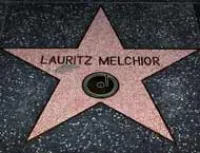Biography
1890 - 1973
"Regard your voice as capital in the bank. Sing on your interest and your voice will last.”
– Lauritz Melchior
A Danish opera singer known for his masterful rendering of Wagner, Lauritz Melchior was born in Copenhagen and began his operatic vocal training at 18. Though he started out seated as a baritone, at 27 he was persuaded to retrain his voice and become a heldentenor – a powerful tenor whose voice is suited for heroic roles. Though twice married and a father, Melchior’s sexual liaisons with men are well documented. In 1920 he came to England to sing in an experimental radio broadcast and met longtime lover, novelist Hugh Walpole. Despite appearances in opera houses worldwide, Melchior is best known for his astounding 519 performances in Wagnerian roles at The Metropolitan Opera of New York between 1926-1950, with his breakthrough being his role in ‘Trisan und Isolde’ in 1929. His work was widely recorded with impressive sales on a number of music labels. In addition to his voice, Melchior was also blessed with a wonderful sense of humor and a charisma that made him a favorite on radio shows with Eddie Cantor and Fred Allen. His sparkling personality was even well suited for film. He appeared in 5 post WWII musicals for MGM and Paramount, primarily in jovial grandfatherly roles - and gained such popularity that in 1947 his hand and footprints were placed in cement at Grauman’s Chinese Theater. Mostly retired after the mid 1950s, he continued to perform on TV and at venues worldwide. In the late 1960s set up a fund for training heldentenors at Julliard. Though a US citizen since 1947, when Melchior died in 1973 he was laid to rest in Copenhagen.
1890 - 1973
"Regard your voice as capital in the bank. Sing on your interest and your voice will last.”
– Lauritz Melchior
A Danish opera singer known for his masterful rendering of Wagner, Lauritz Melchior was born in Copenhagen and began his operatic vocal training at 18. Though he started out seated as a baritone, at 27 he was persuaded to retrain his voice and become a heldentenor – a powerful tenor whose voice is suited for heroic roles. Though twice married and a father, Melchior’s sexual liaisons with men are well documented. In 1920 he came to England to sing in an experimental radio broadcast and met longtime lover, novelist Hugh Walpole. Despite appearances in opera houses worldwide, Melchior is best known for his astounding 519 performances in Wagnerian roles at The Metropolitan Opera of New York between 1926-1950, with his breakthrough being his role in ‘Trisan und Isolde’ in 1929. His work was widely recorded with impressive sales on a number of music labels. In addition to his voice, Melchior was also blessed with a wonderful sense of humor and a charisma that made him a favorite on radio shows with Eddie Cantor and Fred Allen. His sparkling personality was even well suited for film. He appeared in 5 post WWII musicals for MGM and Paramount, primarily in jovial grandfatherly roles - and gained such popularity that in 1947 his hand and footprints were placed in cement at Grauman’s Chinese Theater. Mostly retired after the mid 1950s, he continued to perform on TV and at venues worldwide. In the late 1960s set up a fund for training heldentenors at Julliard. Though a US citizen since 1947, when Melchior died in 1973 he was laid to rest in Copenhagen.
Demography
Demography
Gender Male
Sexual Orientation Bisexual
Gender Identity Cisgender
Ethnicity Caucasian/White
Nations Affiliated Denmark United States
Era/Epoch Interwar Period (1918-1939) Roaring Twenties (1920-1929)
Field(s) of Contribution
Film
Music
Radio
Commemorations & Honors
Hand and Footprints Outside Grauman’s Chinese Theater (1947)
Hollywood Walk of Fame Star For Recording (1960)
Demography
Gender Male
Sexual Orientation Bisexual
Gender Identity Cisgender
Ethnicity Caucasian/White
Nations Affiliated Denmark United States
Era/Epoch Interwar Period (1918-1939) Roaring Twenties (1920-1929)
Field(s) of Contribution
Film
Music
Radio
Commemorations & Honors
Hand and Footprints Outside Grauman’s Chinese Theater (1947)
Hollywood Walk of Fame Star For Recording (1960)
Resources
Resources
Resources






